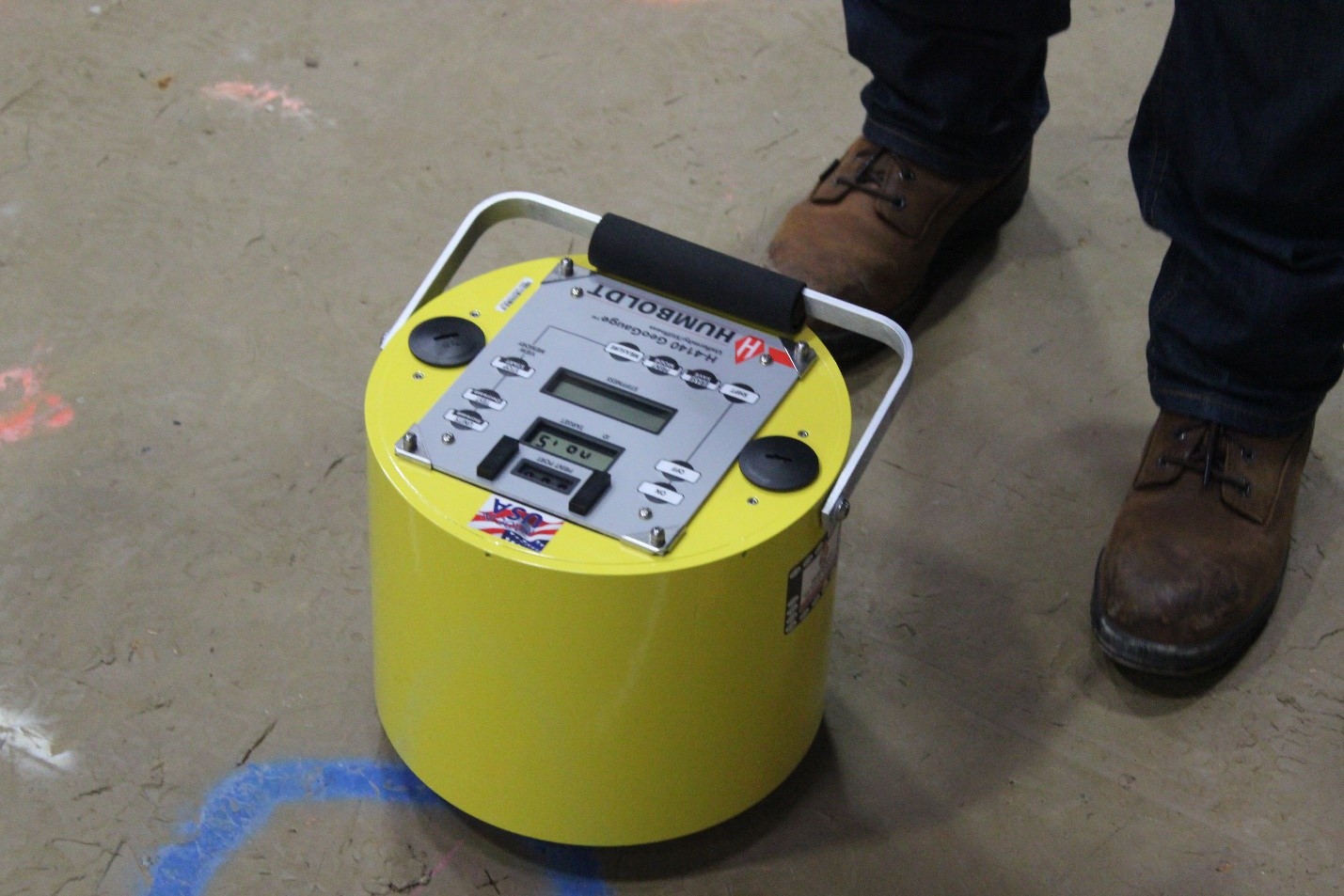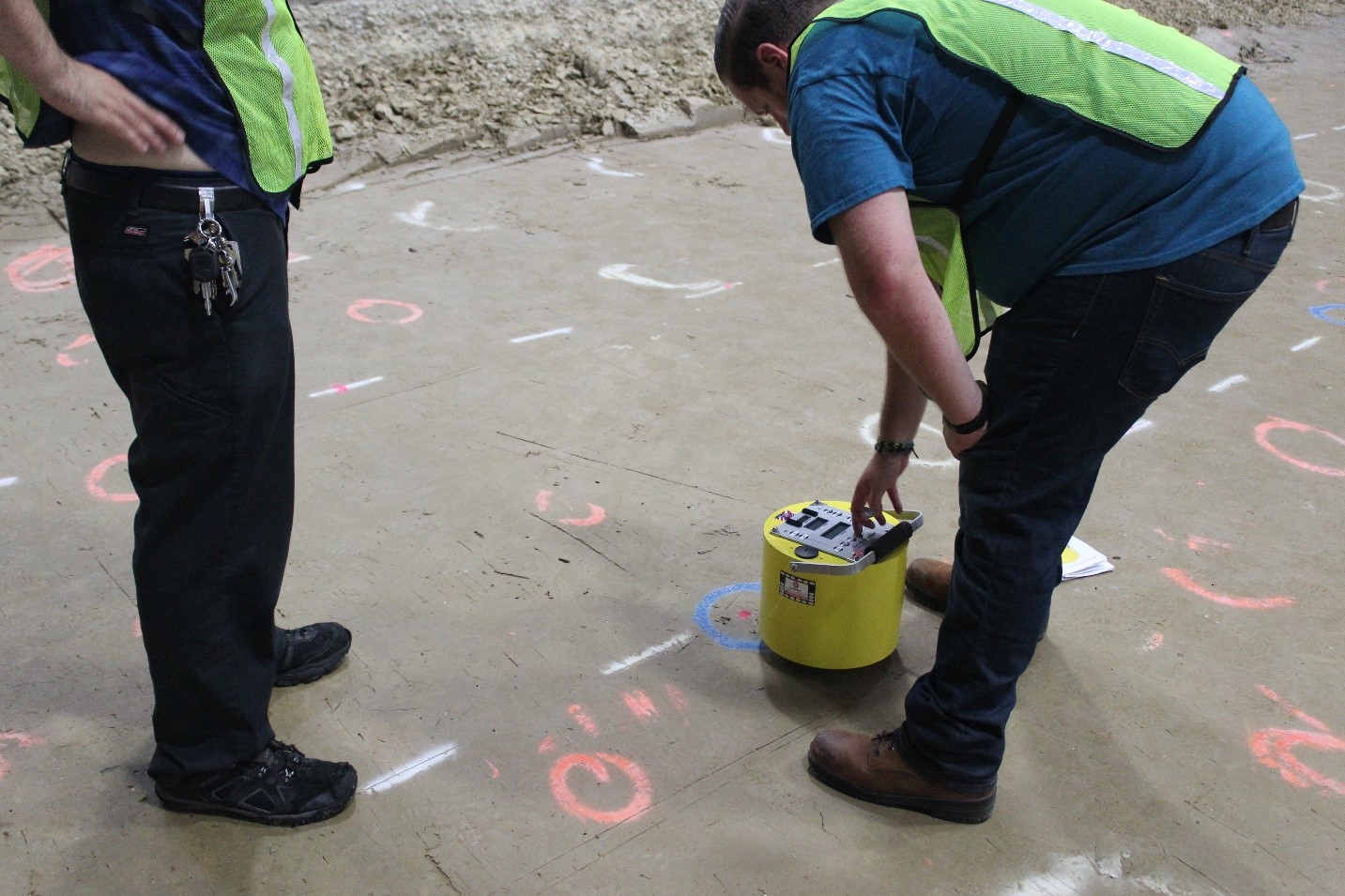Stiffness and Modulus Gauge

The stiffness and modulus gauge is a device used to measure the stiffness and strength of in-place compacted materials primarily for quality control and quality assurance (QC/QA) during construction. It can be used to evaluate unbound subgrades and bases, as well as both flexible and rigid pavements. The load-bearing characteristics of the materials are evaluated by measuring applied force and resulting displacement induced by a small harmonic oscillator.
The system consists of a cylindrical body that sits on a ring-shaped foot with rubber insulators. The foot remains in contact with the material surface and has a motor to vibrate the foot and sensors to measure the applied force and induced surface deflections. The foot vibrates at several frequencies to apply very small displacements to the surface. The stiffness, the ratio of force to deflection, is calculated for each frequency and then the average is displayed on the digital readout. By assuming a Poisson’s ratio for the material, the stiffness can be used to calculate the Young’s Modulus and thus evaluate the strength.
The gauge is an easily portable device, and each test is a one-minute process that requires little to no surface preparation. The user can evaluate a large area in a grid pattern in a relatively short period of time. This allows the gauge to be used to directly evaluate the in-place engineering properties of the pavement system during construction, either in the field or laboratory test beds.

Stiffness and Modulus Gauge Testing Conducted at NAPTF (Click to Zoom)
Return to NDT Technology Overview